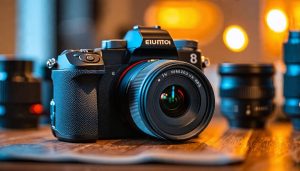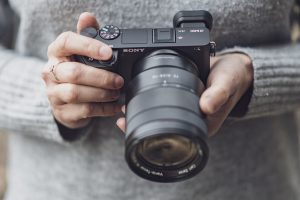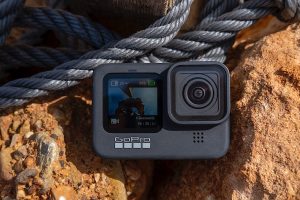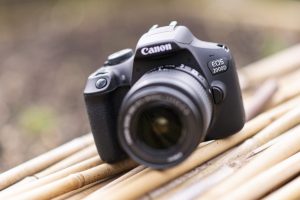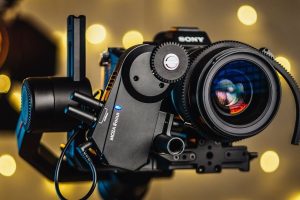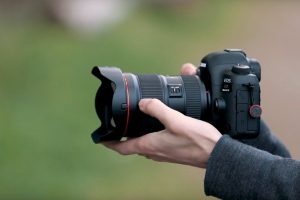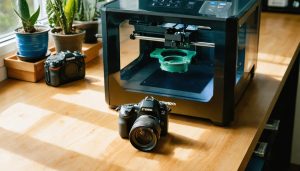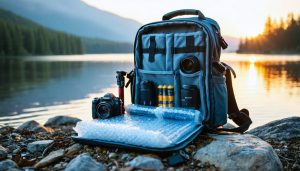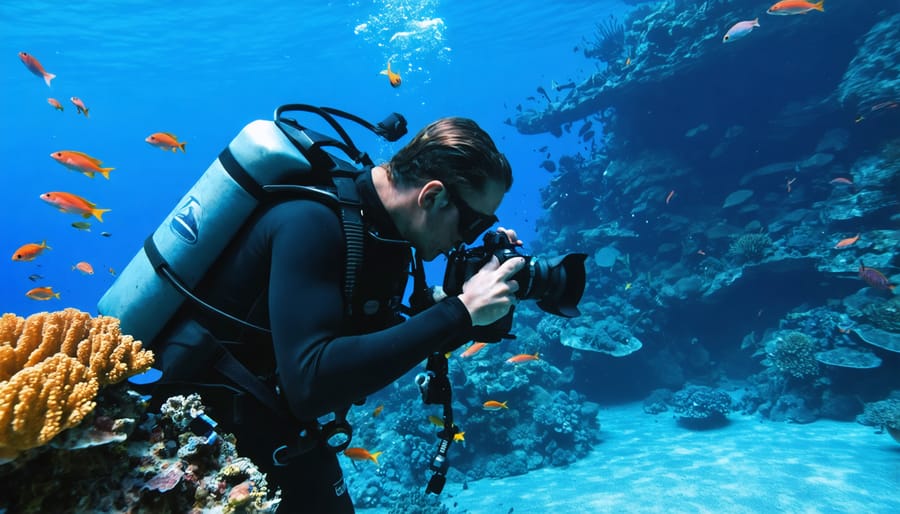
Dive into crystal-clear 4K underwater photography with today’s revolutionary camera technology, capable of capturing vibrant marine life and seascapes with unprecedented detail. Modern underwater 4K cameras deliver professional-grade underwater camera performance at depths up to 40 meters, combining advanced image stabilization with specialized white balance algorithms that cut through water’s color-distorting effects.
Whether you’re documenting coral reefs or capturing split-shot perspectives where ocean meets air, these sophisticated imaging tools represent a quantum leap from traditional underwater photography. Their 4K resolution reveals intricate details in marine environments, while high-speed sensors freeze fast-moving subjects like dolphins or schooling fish with remarkable clarity.
Professional underwater photographers and marine researchers increasingly rely on 4K technology to document ocean ecosystems with scientific precision, while adventure travelers and diving enthusiasts use these cameras to share their underwater discoveries in stunning detail. With proper housing and lighting accessories, today’s 4K underwater cameras transform challenging subsea conditions into opportunities for extraordinary image-making.
What Makes a True 4K Underwater Camera?
Resolution vs. Real Performance
When shopping for a 4K underwater camera, it’s crucial to understand that not all “4K” claims are created equal. While many cameras advertise 4K capabilities, their actual performance underwater can vary significantly. True 4K resolution delivers 3840 x 2160 pixels, but some manufacturers market their cameras as 4K while actually interpolating from lower resolutions or compromising quality in low-light conditions – a common scenario underwater.
Real underwater 4K performance depends on several factors beyond raw pixel count. The camera’s sensor size, processing power, and compression methods play vital roles. For instance, a camera might record 4K at 30fps in air but drop to 1080p when using an underwater housing due to increased processing demands from water pressure and temperature variations.
To ensure you’re getting genuine 4K quality underwater, look for cameras with larger sensors (at least 1-inch), efficient heat management systems, and high bitrates. Pay attention to real-world underwater footage samples rather than marketing specifications alone. Professional underwater photographers often recommend testing the camera’s low-light performance and color reproduction capabilities, as these factors significantly impact the final image quality in aquatic environments.
Depth Ratings Explained
When selecting a 4K underwater camera, understanding depth ratings is crucial for both safety and performance. These ratings indicate the maximum depth at which your camera can operate without water damage or pressure-related issues. Most consumer underwater cameras are rated between 10-30 meters (33-100 feet), suitable for recreational diving and snorkeling. Professional models can handle depths of 60 meters (200 feet) or more.
Water pressure increases by approximately 1 atmosphere (14.7 PSI) for every 10 meters of depth. This means your camera needs robust sealing and construction to prevent water ingress. Quality underwater housings use multiple O-rings, pressure-tested seams, and reinforced materials to maintain integrity at depth.
Consider your intended use when evaluating depth ratings. For snorkeling and shallow diving, a 10-meter rating suffices. However, if you’re planning deep dives or professional underwater photography, invest in equipment rated for greater depths. Remember that exceeding a camera’s depth rating risks not only damaging your equipment but also losing valuable footage and potentially compromising your safety underwater.
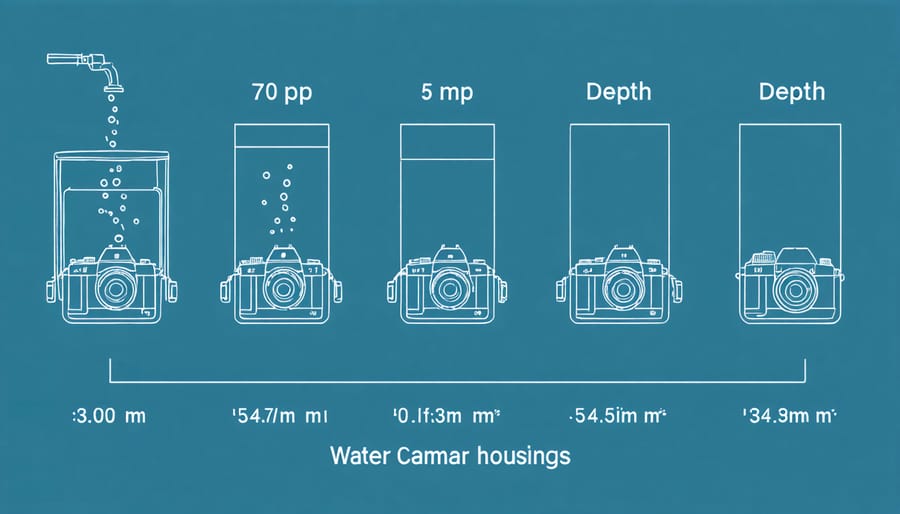
Top 4K Underwater Camera Systems
Purpose-Built Underwater Cameras
Purpose-built underwater cameras represent the pinnacle of aquatic imaging technology, designed specifically to capture stunning 4K footage beneath the waves without the need for additional housing. These specialized devices combine robust waterproofing with advanced imaging capabilities, making them ideal for diverse underwater scenarios.
Leading the pack is the Paralenz Vaquita, engineered specifically for divers, with depth-sensing technology that automatically adjusts white balance and color correction as you descend. Its cylindrical design allows for natural handling with thick diving gloves, while delivering crystal-clear 4K footage at depths up to 350 meters.
The SeaLife DC2000 takes a different approach, featuring a compact form factor with large, easy-to-operate buttons and an intuitive interface. It captures true 4K video and 20-megapixel still images, with specialized underwater shooting modes that optimize exposure and color balance for various conditions, from shallow reefs to deeper dive sites.
For professional underwater cinematographers, the Gates Pro Action Camera offers uncompromising build quality and image fidelity. While considerably more expensive than consumer options, it delivers broadcast-quality 4K footage with superior low-light performance and professional-grade color science.
These purpose-built cameras offer several advantages over housed conventional cameras:
– No risk of housing failures or floods
– Optimized ergonomics for underwater use
– Specialized sensors and lenses for underwater light transmission
– Built-in color correction for different depths
– Pressure and depth ratings guaranteed from the factory
– Simplified maintenance and operation
However, they do come with trade-offs. Purpose-built underwater cameras typically offer less flexibility in terms of lens options and may have more limited use above water compared to housed systems. They also tend to have fixed lenses, which can restrict creative options but ensures reliable waterproofing and simplified operation underwater.
When choosing a purpose-built underwater camera, consider your specific needs, diving experience, and budget. For casual users and recreational divers, entry-level models provide excellent 4K quality while maintaining user-friendly operation. Professional users might prefer higher-end options that offer advanced features and superior image quality for commercial work.
Professional DSLR/Mirrorless Housing Systems
Professional housing systems represent the gold standard for underwater 4K photography, offering unparalleled protection and functionality for high-end DSLR and mirrorless cameras. These robust enclosures are typically crafted from marine-grade aluminum or high-strength polycarbonate, capable of withstanding pressures at depths of up to 330 feet (100 meters) or more.
Leading manufacturers like Nauticam, Ikelite, and Sea & Sea design housings specifically for popular camera models from Sony, Canon, Nikon, and other major brands. These systems provide access to all essential camera controls through precisely engineered buttons, dials, and levers, ensuring you maintain full creative control underwater.
What sets professional housings apart is their modular nature. They feature multiple port options to accommodate different lenses, from wide-angle to macro, and support external strobes through fiber-optic or electronic sync connections. Many systems also include vacuum check systems, which help verify the watertight seal before entering the water – a crucial safety feature for protecting your valuable camera equipment.
The build quality of these housings is exceptional, with double O-ring seals, depth-rated port locks, and moisture alarms standard on most models. Some manufacturers even offer optional features like built-in vacuum systems and electronic monitoring of the housing’s integrity.
While these systems represent a significant investment, often ranging from $2,000 to $5,000 or more for the housing alone, they offer unmatched reliability and image quality. They’re particularly valuable for professional underwater photographers, scientific documentation, and serious enthusiasts who demand the highest quality results in challenging underwater environments.
When selecting a professional housing, consider factors like depth rating, ergonomics, port compatibility, and the availability of local support or spare parts. It’s also worth noting that many manufacturers offer rental options, allowing you to test different systems before making a substantial investment.
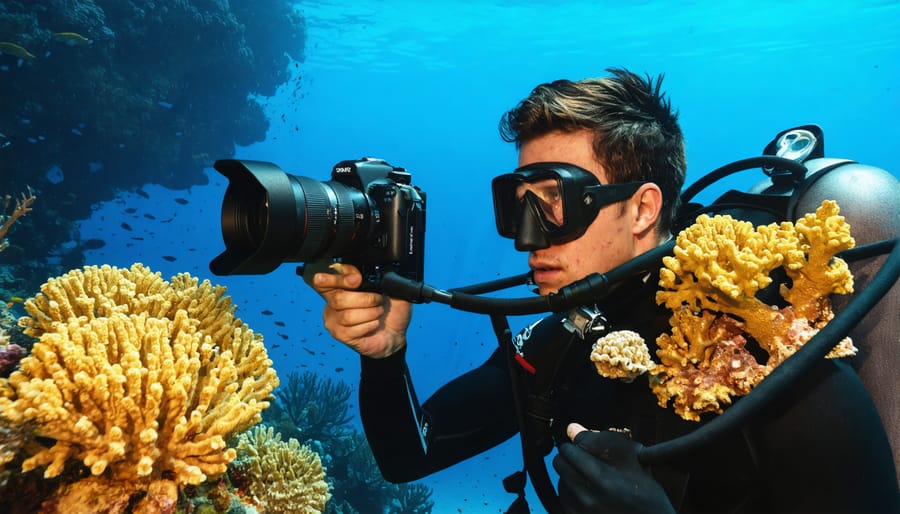
Action Cameras with 4K Capability
When it comes to action cameras for underwater photography, several models stand out for their 4K capabilities and robust waterproof features. The GoPro HERO11 Black leads the pack with its impressive 5.3K video resolution, superior image stabilization, and native waterproof design up to 33 feet. For deeper dives, its dedicated housing extends protection to 196 feet.
The DJI Osmo Action 4 offers exceptional low-light performance and native waterproofing to 52 feet, making it particularly suitable for twilight diving sessions. Its RockSteady stabilization ensures smooth footage even in challenging underwater conditions.
The Insta360 ONE RS brings versatility with its modular design and interchangeable lenses. While it requires a dedicated underwater case, its ability to capture both traditional and 360-degree footage in 4K makes it a unique option for creative underwater storytelling.
For budget-conscious photographers, the AKASO Brave 7 LE provides reliable 4K performance and comes with included underwater housing. While it may not match the color science of premium options, it offers excellent value for casual underwater photographers.
Remember that regardless of which camera you choose, proper maintenance and the use of appropriate filters for color correction underwater will significantly enhance your final footage.
Essential Accessories for 4K Underwater Photography
Lighting Solutions
Lighting is crucial for capturing stunning underwater footage with your 4K camera, as water absorbs light differently than air. Even in seemingly bright conditions, you’ll need additional lighting to bring out the vibrant colors and details that make underwater photography so captivating.
For optimal results, consider using dual video lights positioned at 45-degree angles from your camera. This setup, inspired by professional lighting techniques, helps eliminate harsh shadows and provides even illumination of your subject.
When choosing underwater lights, look for options with adjustable power settings and a color temperature around 5000-5600K, which closely matches natural daylight. LED lights are particularly effective, offering long battery life and consistent color rendering. For wide-angle shots, lights with a beam angle of 100-120 degrees work best, while macro photography benefits from more focused beams of 60-90 degrees.
Consider investing in lights with multiple power levels and red light modes. Red light is less likely to disturb marine life, making it ideal for capturing natural behavior. Additionally, backup lighting solutions like compact emergency lights can be invaluable if your primary lights fail during a dive.
Remember that water clarity and depth will affect your lighting needs. In murky conditions or at greater depths, more powerful lights (2000+ lumens) may be necessary to achieve proper exposure and maintain those crisp 4K details.
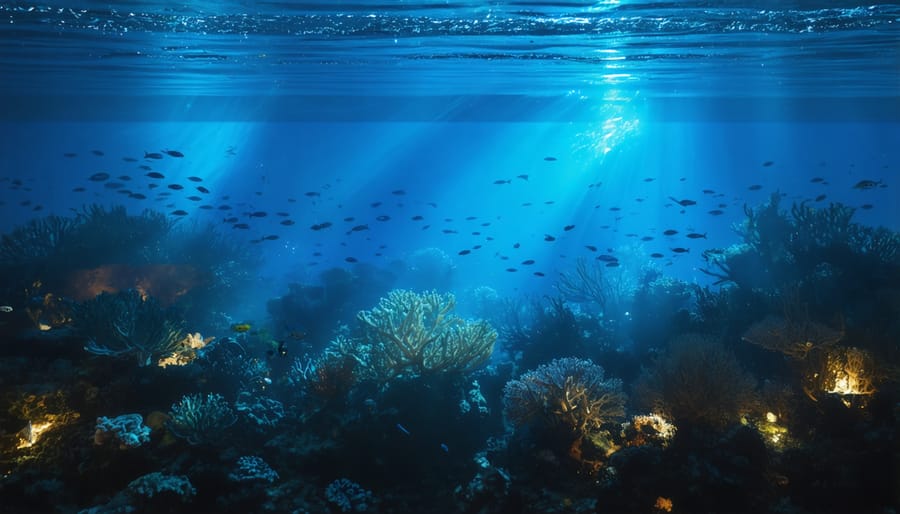
Filters and Lens Options
When shooting underwater, the right filters and lenses can make the difference between murky blue images and vibrant, professional-quality footage. Red filters are essential for depths beyond 15 feet, as they help restore the natural colors that water tends to absorb. For optimal results, consider using gradient filters that adapt to varying depths during your dive.
Wide-angle wet lenses are particularly valuable for underwater 4K photography, allowing you to get closer to your subject while maintaining a broader field of view. This proximity reduces the amount of water between your camera and the subject, resulting in clearer, more detailed footage. Macro lenses, on the other hand, are perfect for capturing small marine life in stunning detail, from tiny coral polyps to colorful nudibranchs.
Many underwater photographers opt for dome ports, which help maintain image quality by reducing distortion and maintaining corner sharpness. The size of your dome port matters – larger domes (6-8 inches) typically provide better results for wide-angle shots, while smaller domes work well for macro photography.
Don’t forget about polarizing filters, which can help reduce unwanted reflections and glare from the water’s surface when shooting in shallow depths. For the best results, invest in filters specifically designed for underwater use, as standard above-water filters may not perform as effectively in aquatic environments.
Remember to clean and maintain your filters and lenses regularly, as salt water can leave residue that affects image quality. Always rinse with fresh water after each dive and store in protective cases.
Real-World Performance Factors
Battery Life and Storage Needs
When shooting 4K underwater footage, battery life and storage capacity become crucial considerations. Most underwater cameras can record between 1-2 hours of 4K footage on a single charge, but cold water temperatures can significantly reduce battery performance. It’s essential to carry at least two fully charged batteries for a day of diving, especially if you’re planning multiple dives.
As for storage, 4K footage consumes substantial space – approximately 350MB to 400MB per minute of recording. For a typical dive session, you’ll want at least 128GB of storage capacity. High-speed memory cards rated at UHS-I U3 or faster are necessary to handle 4K data rates without dropping frames. Consider investing in multiple memory cards rather than relying on a single high-capacity card – this provides backup options and helps manage your footage more effectively.
Pro tip: Keep your batteries warm between dives by storing them in an insulated container, and always format your memory cards in-camera before a diving session to prevent potential recording issues.
Handling and Ergonomics
Using a 4K underwater camera requires careful consideration of ergonomics, as handling these devices underwater presents unique challenges. Most underwater cameras feature larger buttons and control dials specifically designed for use with diving gloves, making it easier to adjust settings during your dive. The camera’s weight and buoyancy also play crucial roles in underwater handling – ideally, your setup should be slightly negative or neutral in water to prevent arm fatigue during longer shooting sessions.
The placement of controls is particularly important underwater, where quick adjustments can make the difference between capturing or missing a shot. Look for cameras with intuitive menu systems and customizable buttons that can be operated without taking your eye off the subject. Many modern underwater cameras incorporate touch screens, though these typically only function above water.
Pay attention to the grip design, as a secure hold is essential when dealing with currents or while swimming. Some models offer dedicated underwater housing grips or trays that provide additional stability and mounting points for lights, making the entire system more manageable in challenging conditions.
Maintenance and Care
Proper maintenance of your 4K underwater camera is crucial for its longevity and performance. After each dive, rinse your camera housing thoroughly with fresh water, paying special attention to buttons, dials, and seals. Remove the camera from its housing and dry both components separately, using a microfiber cloth to prevent water spots.
Regular inspection of O-rings is essential for protecting underwater equipment from water damage. Clean these seals with a soft brush, apply silicone grease sparingly, and replace them if you notice any signs of wear or damage.
Store your camera and housing in a cool, dry place away from direct sunlight. Consider using silica gel packets in your storage case to prevent moisture buildup. Before each dive, perform a vacuum test on the housing if it has this feature, or submerge it without the camera to check for leaks.
Keep spare batteries charged and memory cards clean. Regular firmware updates ensure optimal performance, while periodic professional servicing of the housing can identify potential issues before they become serious problems.
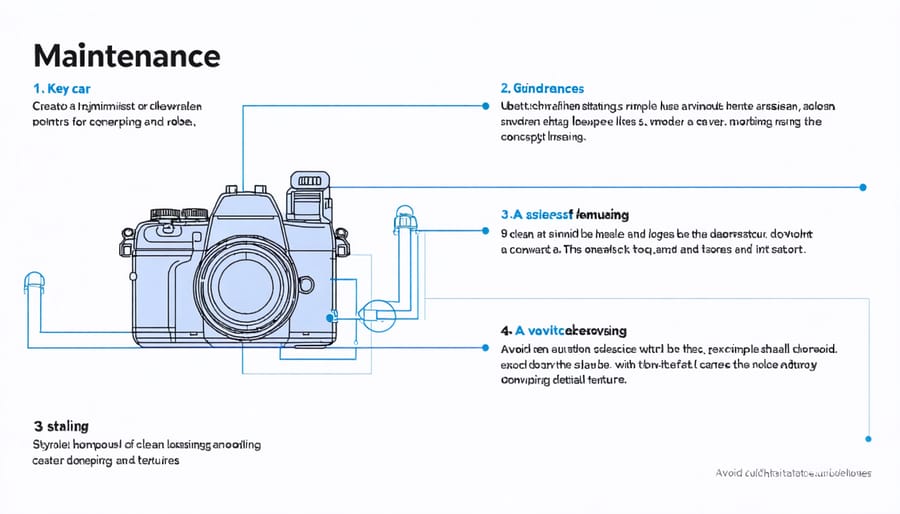
As we’ve explored throughout this guide, 4K underwater cameras have revolutionized the way we capture the mesmerizing world beneath the waves. Whether you’re a professional photographer or an enthusiastic hobbyist, investing in the right underwater camera system is crucial for achieving stunning results.
Remember that successful underwater photography depends on several key factors: choosing a camera with appropriate depth rating, ensuring proper housing compatibility, selecting the right lighting setup, and understanding the specific requirements of underwater shooting conditions. The combination of 4K resolution with advanced features like image stabilization, manual controls, and robust auto-focus systems makes modern underwater cameras incredibly capable tools.
For beginners, we recommend starting with a compact system that offers good value while maintaining essential features. More experienced photographers might want to consider mirrorless or DSLR systems with dedicated underwater housings for maximum creative control and image quality.
Don’t forget the importance of proper maintenance and care for your equipment. Regular cleaning, careful storage, and thorough checks before each dive will help protect your investment and ensure reliable performance underwater.
With the right combination of equipment, knowledge, and practice, you’ll be well-equipped to capture the stunning beauty of marine life in breathtaking 4K quality. As technology continues to advance, we can only expect underwater imaging capabilities to become even more impressive, opening up new creative possibilities for underwater photographers everywhere.


